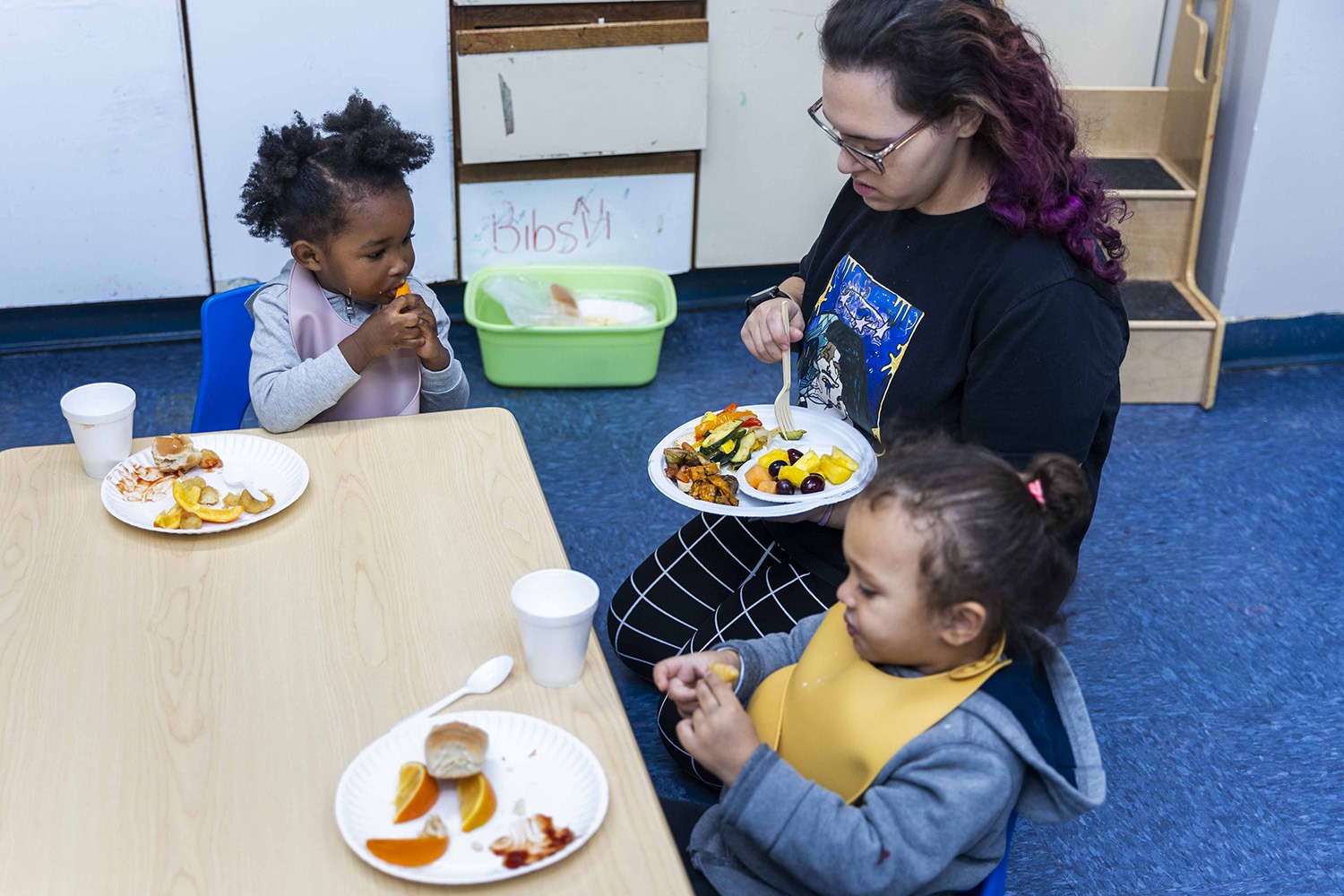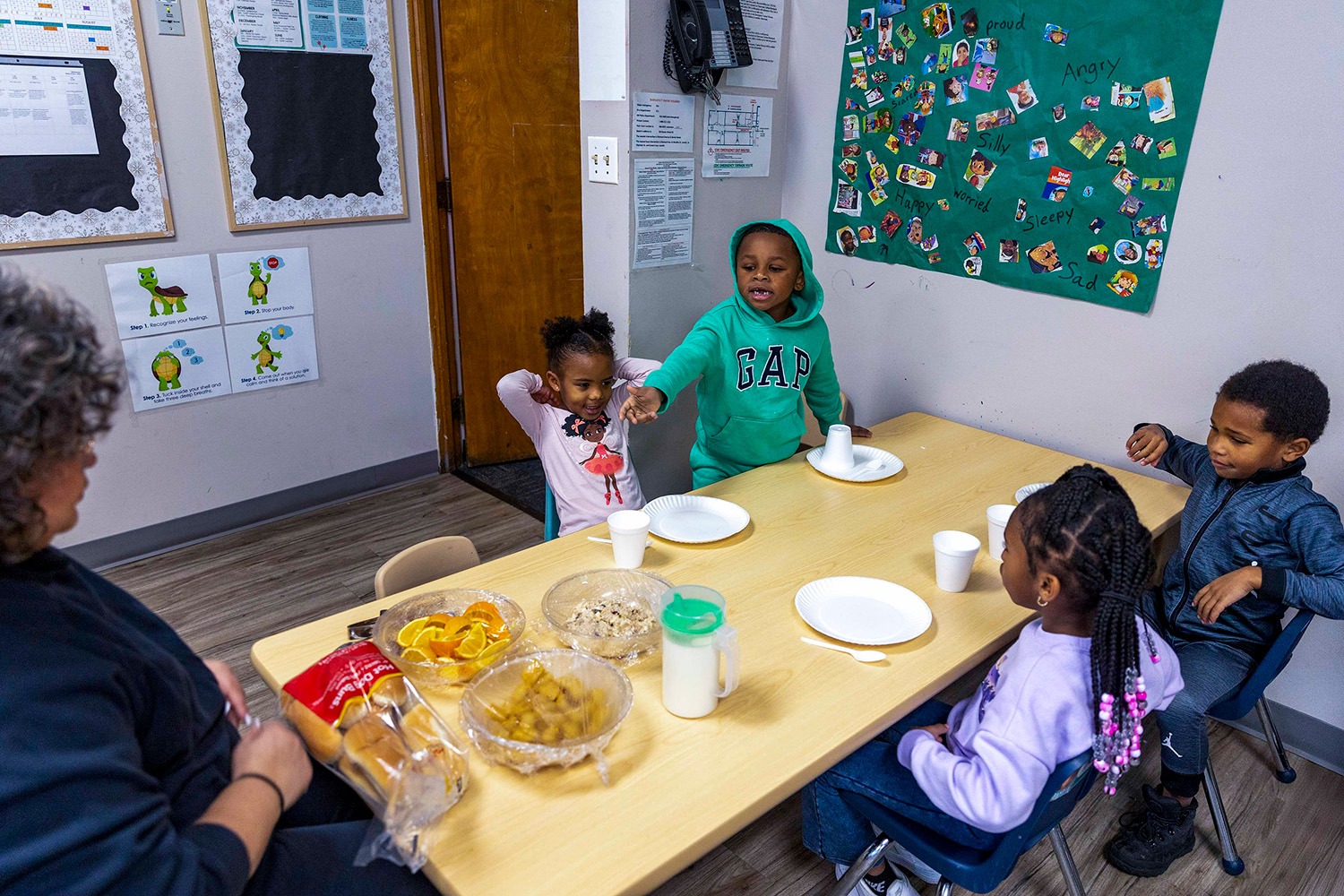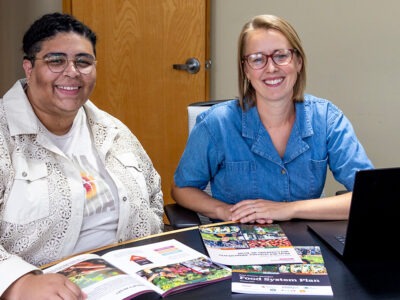Picture this: you are at your old school’s cafeteria waiting in line with your friends for a warm plate of food. The options on the menu are chicken, rice pilaf, steamed green beans, sweet potatoes and chopped fresh lettuce mix grown from a local farm in the county next door. This isn’t the future–this is exactly what dozens of public schools and early childhood centers across Michigan – both the upper and lower peninsula – are now able to offer their students on a daily basis thanks to 10 Cents a Meal For Michigan’s Kids & Farms.
The program began in 2016 in Traverse City by helping area schools subsidize the purchase of locally grown legumes.
“School districts and early childhood providers apply to the state of Michigan to participate in the 10 Cents a Meal program, and then buy a portion of the food they feed children in their care as locally-bought produce. They are subsidized by the state for 10 cents of every meal they serve, the cost based on those meals being sourced from local growers,” said Marijata Daniel-Echols, program officer at the W.K. Kellogg Foundation (WKKF).
As of 2024, 270 schools, early childhood and education sites and other organizations across 66 of Michigan’s 83 counties serve Michigan-grown fruits, vegetables and dry beans.

Growing nutrition in Michigan schools and communities
While not every community in the state has access to full-service grocery stores or can afford to purchase fresh produce for their children, this program is helping to close those gaps by increasing access to fresh food for students in schools, said Daniel-Echols.
“Every kid is going to school and can get access to foods that they might not be able to get at home. It is part of making sure every kid eats well and is nourished so they can learn, so every child can thrive,” she added.
The program will expand to more counties next year, with $4.5 million in funding allocated through the state school aid budget.
Additionally, says Daniel-Echols, WKKF is partnering with Groundwork Center for Resilient Communities to help more early childhood centers access affordable and nutritious food through the 10 Cents A Meal program.
“One of the things we’ve done with Groundwork is tasking them with working with early childhood providers in communities, to connect them with growers and helping them understand how to make this program work to make it easier for these providers,” she said.
As an example, if a school purchases $100 of fresh Michigan broccoli, the 10 Cents a Meal grant refunds them $50, making the produce more affordable. But getting schools to buy into the program hasn’t always been straightforward, said May Tsupros, member of the leadership team for the 10 Cents A Meal program and the director of Farm to Institution Programs at the Michigan State University Center for Regional Food Systems.
“It’s really hard when you have broad line distributors who are shipping in food products from other states or hundreds of miles away, and they’re coming in so much cheaper than local produce,” they said. “A lot of food service directors are willing to pay that extra price for local food, but some are not.”

According to Tsupros, one key factor in gaining support from school leaders is enabling them to see first-hand the impact of experiential learning. When children taste vegetables they’ve never had access to before, try new healthy recipes right in their classrooms and make the connection between farm and table, it sparks a deeper understanding and commitment to the program.
“It’s truly a catalyst for both schools and students. What’s really, really beautiful is watching others recognize the connections: fresh, local food improves health outcomes, supports the environment and boosts the local economy. It’s a win-win all around,” Tsupros explained.
Farm to fork: Overcoming barriers to local food procurement
Connecting farmers to schools is key to the program’s success, but that’s not always easy. Barriers to success can include a lack of awareness of the program on the part of farmers or schools, or school staffing capacity to implement it.
“What we are finding is an efficient and preferred way to make those connections happen is getting farmers to supply their food to ‘food hubs’ and then the school just purchases in the aggregate from the hub,” said Tsupros.
A food hub is a centrally located facility that connects with local farmers to purchase their produce and then sells that produce to the local community, according to the U.S Department of Agriculture (USDA). Food hubs in Michigan include the Valley Hub through the Kalamazoo Valley Community College and Flint Fresh.
“Let’s say you want to buy a pallet of carrots for your school district but buying a pallet of carrots from one farmer might not be feasible because they don’t grow enough. But a food hub will get carrots from many different farmers and then could fill that order because they’re aggregating many different farmers’ carrots together,” said Tsupros.

Sowing lifelong lessons: Food education builds curiosity and confidence
The program’s next step is helping students better understand where the produce they eat is grown.
“10 Cents A Meal is a piece of a larger puzzle that is encouraging a culture shift within school districts, whether they start implementing more nutrition education, creating a school garden and enriching children’s education through hands-on learning about food, health and agriculture,” Tsupros added.
Tsupros hopes the program will help raise awareness in school districts and early childhood centers about the value food service staff have in keeping kids in the classroom fed and ready to learn.
“Food service staff [in my opinion] are underpaid, there’s a discrepancy in just how we’re valuing people in the food supply chain, and making sure farmers are supported, our distributors are supported, our transportation drivers of that food are supported as well as the people that are actually preparing it,” they said.
Even though the process to change culture can be slow, Tsupros says they are hopeful it can be done one school meal at a time. They say they’ve already seen it in action in places like Baxter Community Development Center in Grand Rapids. There, children attending the nonprofit’s Child Development Center (CDC) receive healthy meals every day with Michigan-grown fruits, vegetables and dry beans.
For Baxter Community Center Development Director Danielle Guinsler, signing up for the program was a no-brainer. Before the program, the center was growing produce in the summer and purchasing from a vendor that sourced from local farms.
“We try to purchase locally grown fruits and vegetables, we grow our own fruits and vegetables and we do a lot of cooking from scratch throughout the year, even when our gardens shut down for the year,” Guinsler said.
Guinsler, whose two sons benefited from the program, has experienced first-hand the positive impact of introducing fresh produce to children.
“I’ve really seen both of them try new foods,” she said. “And it gave me more confidence as a parent to cook things at home that maybe they hadn’t tried before but they had for the first time at Baxter.”
Baxter is expanding opportunities to parents by hosting semiannual programming where children and their parents or guardians are invited to make a meal together.
“We had child-friendly knives and cutting boards, so kids learned how to prep the vegetables, cut them up,” Guinsler explained. “We also provided enough food so that families could go home with a completely prepared meal, and they also got an air fryer when they participated.”
The idea is to create opportunities so that parents can also benefit from the nutrition education their kids receive in their classrooms.
While Baxter can’t provide locally-sourced ingredients for all student meals, she hopes to eventually partner with local farmers instead of going through a third-party intermediary.

“We need to make sure we’ve got the quantity we need and sometimes that can be tricky when purchasing from one or two local farms,” she said.
The focus on fresh food goes beyond just what’s on the plate—through the program, students also receive nutrition education, learning about the foods they’re eating and taking ownership in the process.
“We can use the 10 Cents A Meal funding to pay for field trips where kids go and pick their own peaches and apples at local farms,” she said. “Then each kid gets to go home with their own fruit, and we are able to also use those in snacks and meals we provide at the center.”
Gunsler said she can see students make connections between themselves and the world around them. Their faces will light up as they eat an apple they pick, all the while interrupting one another with questions of what an apple needs to grow.
“One of the lessons involves them planting a lima bean seed and they then get to explore what it looks like when roots are starting to grow and what is needed to thrive,” she said.
Guinsler said those small moments—where kids learn where their food comes from while eating a healthy and nutritious meal—are building a sense of belonging and a love of learning.







Comments